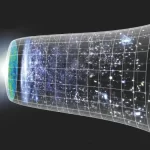Key Takeaways:
- A groundbreaking image of planet formation around a distant star has been captured by the Atacama Large Millimeter/submillimeter Array (ALMA) radio telescope in Chile.
- This image reveals concentric rings in the dust and gas disk surrounding HL Tau, a star located approximately 450 light-years away from Earth.
- These rings are believed to be the result of young planet-like bodies forming in the disk, a surprising find given that HL Tau is relatively young.
- The ALMA image’s remarkable detail and clarity surpassed expectations and even outperformed many visible light images from NASA’s Hubble Space Telescope.
- ALMA’s ability to observe in longer wavelengths allowed it to pierce the dust and gas surrounding HL Tau, providing an unprecedented view of planet birth.
A colossal radio telescope stationed in Chile has unveiled an extraordinary image of planets in the process of forming around a distant star, according to researchers. The Atacama Large Millimeter/submillimeter Array (ALMA) in northern Chile has presented a spectacular view of planet birth, showcasing numerous concentric rings within the disk of dust and gas encircling HL Tau, a star akin to our sun, located roughly 450 light-years away from Earth.

This remarkable image displays features believed to be the outcome of nascent planet-like entities taking shape within the disk. ALMA’s deputy director, Stuartt Corder, remarked, “This is surprising, since HL Tau is no more than a million years old, and such young stars are not expected to have large planetary bodies capable of producing the structures we see in this image.”
Scientists were astonished by the image’s stunning level of detail and clarity. Tony Beasley, director of the National Radio Astronomy Observatory (NRAO), noted that upon first viewing, he suspected it might be a simulation due to its exceptional quality. This image, researchers assert, is the sharpest ever captured by ALMA, surpassing most photos taken by NASA’s Hubble Space Telescope in visible light.
HL Tau is typically obscured by dust and gas, making it challenging to observe using visible light. However, ALMA overcame this obstacle by specializing in observing the universe in longer wavelengths, falling between the radio and infrared portions of the electromagnetic spectrum.

NRAO astronomer Crystal Brogan expressed, “This is truly one of the most remarkable images ever seen at these wavelengths. The level of detail is so exquisite that it’s even more impressive than many optical images. The fact that we can see planets being born will help us understand not only how planets form around other stars but also the origin of our own solar system.”
ALMA’s design involves 66 individual radio telescopes operating as a unified instrument. These telescopes can be repositioned using enormous 28-wheeled transporters. The image of planet formation was obtained by ALMA with its antennas spaced up to 9 miles apart, resulting in a resolution of 35 milliarcseconds, equivalent to being able to spot a penny from 68 miles away. ALMA Director Pierre Cox emphasized that such resolution is achievable only with ALMA’s long baseline capabilities, providing astronomers with unprecedented information impossible to collect with other facilities, even the finest optical observatories.


